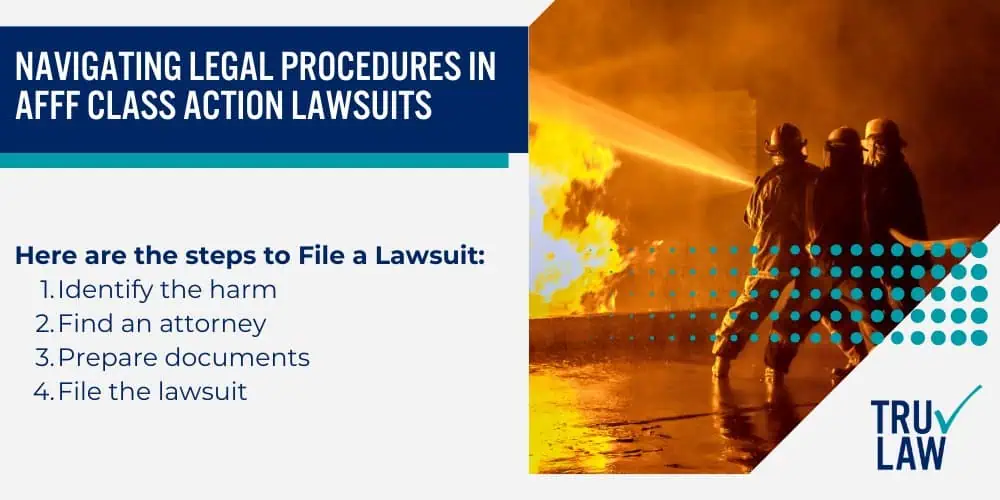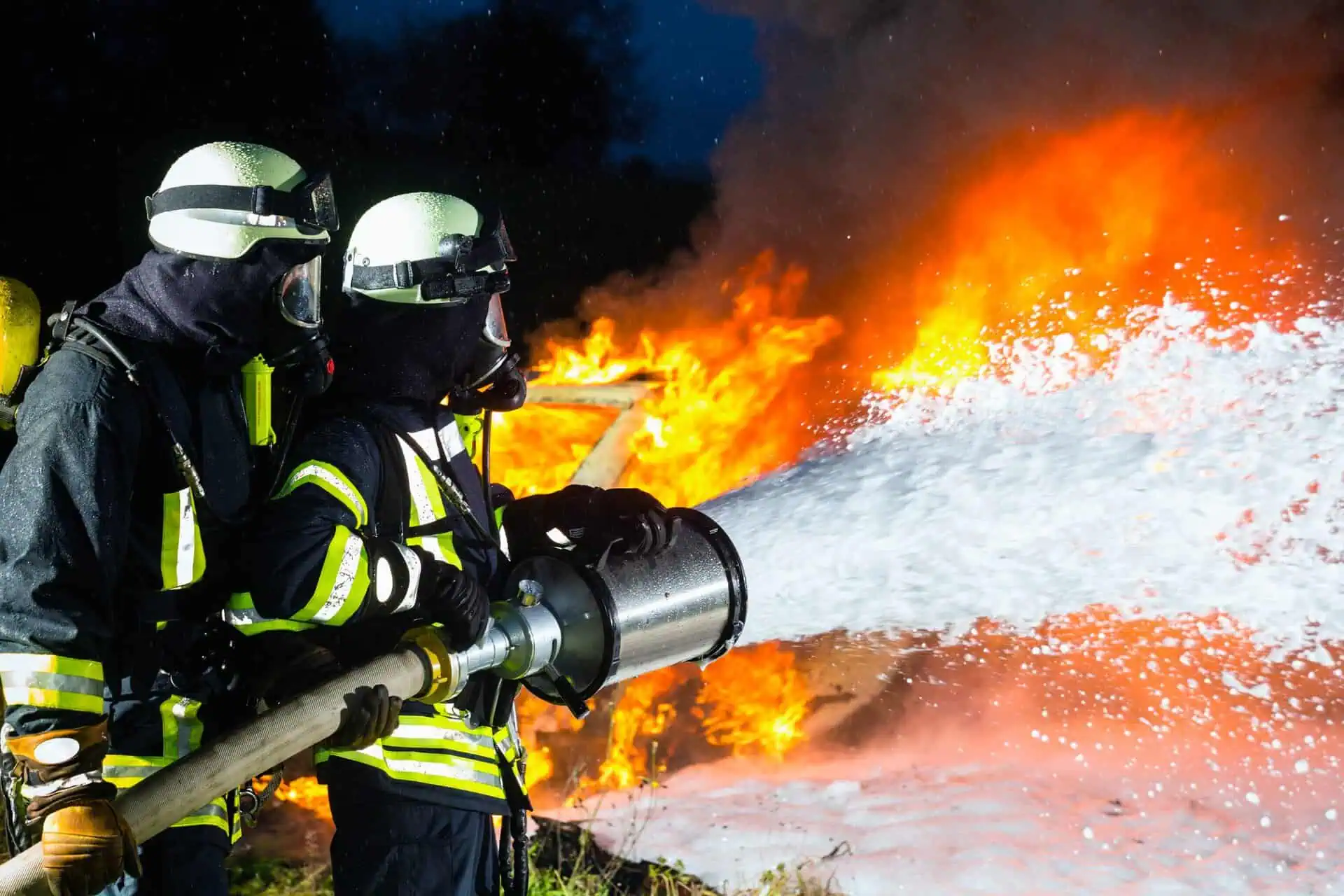AFFF Class Action Lawsuits: Strength in Numbers for Plaintiffs
- Last Updated: July 14th, 2025

Attorney Jessica Paluch-Hoerman, founder of TruLaw, has over 28 years of experience as a personal injury and mass tort attorney, and previously worked as an international tax attorney at Deloitte. Jessie collaborates with attorneys nationwide — enabling her to share reliable, up-to-date legal information with our readers.
Legally Reviewed
This article has been written and reviewed for legal accuracy and clarity by the team of writers and legal experts at TruLaw and is as accurate as possible. This content should not be taken as legal advice from an attorney. If you would like to learn more about our owner and experienced injury lawyer, Jessie Paluch, you can do so here.
Fact-Checked
TruLaw does everything possible to make sure the information in this article is up to date and accurate. If you need specific legal advice about your case, contact us by using the chat on the bottom of this page. This article should not be taken as advice from an attorney.
Key takeaways:
- These lawsuits serve as a powerful instrument for individual plaintiffs who are in pursuit of justice.
- The strength of class action lawsuits lies in their ability to increase the probability of a successful lawsuit outcome.
- The health risks associated with AFFF aren't limited only to those directly handling the foam.
AFFF Class Action Lawsuits: Strength in Numbers for Plaintiffs
Collective legal action, particularly AFFF class action lawsuits, have emerged as a significant force in the current intricate legal environment.
These lawsuits serve as a powerful instrument for individual plaintiffs who are in pursuit of justice.
The strength of class action lawsuits lies in their ability to increase the probability of a successful outcome.
Moreover, these lawsuits have a practical edge, as they distribute the legal costs among the plaintiffs.
This characteristic makes class action lawsuits an economically viable option for many who might otherwise be deterred by the prospect of high legal fees.
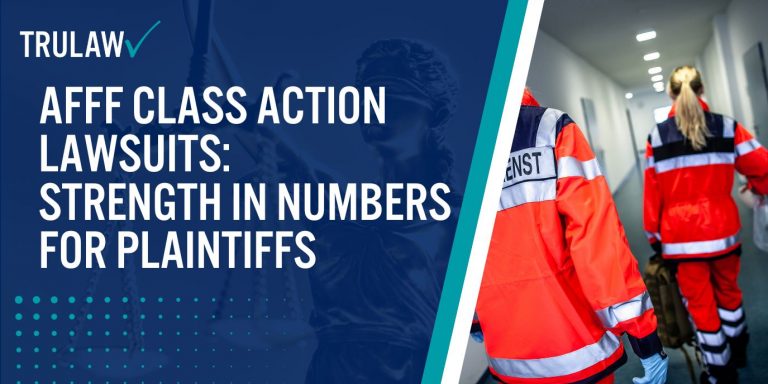
In a class action lawsuit, individual claims are united into a single, cohesive case.
This consolidation is particularly beneficial in situations involving mass torts and personal injury claims, where the testimony of experts can greatly influence the result.
However, it’s important to remember that while each plaintiff contributes to the collective strength of the class action, success is not guaranteed.
The opposing party, often a corporation or other large entity, will likely have a robust defense strategy.
Therefore, it is crucial for plaintiffs to engage with a law firm that specializes in class action lawsuits and is familiar with the tactics used by these defendants.
Table of Contents
Introduction to AFFF Class Action Lawsuits
AFFF class action lawsuits refer to legal cases filed against manufacturers of aqueous film-forming foams (AFFF).
These foams, commonly used in firefighting, have been linked to severe health problems due to their high concentration of perfluoroalkyl and polyfluoroalkyl substances (PFAS), known for their potential carcinogenic properties.
The Rise of AFFF Related Cases
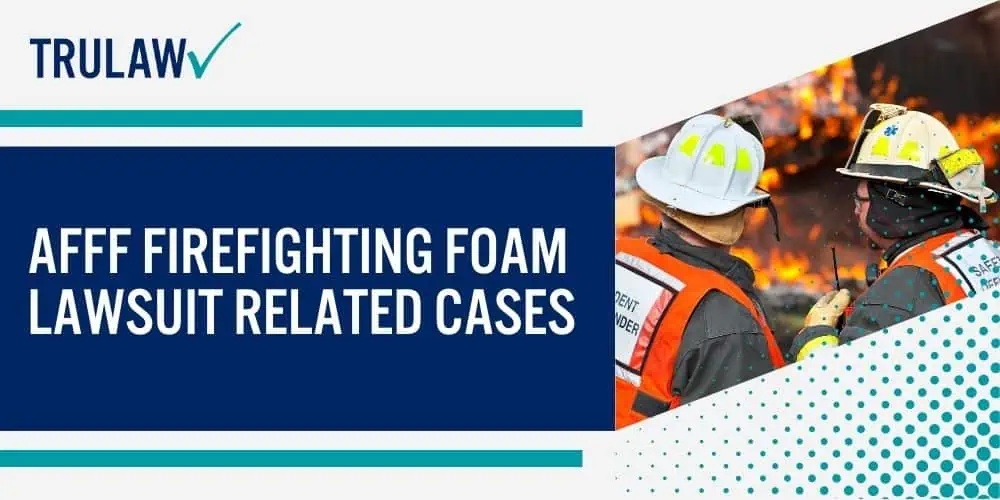
The recent years have seen a significant increase in the number of AFFF firefighting foam lawsuit related cases.
This surge can be attributed to heightened awareness about the harmful effects of PFAS toxic chemicals and the subsequent scrutiny of products containing these substances.
Here are some things included in updates:
- In 2018, there were barely a handful of these cases.
- By 2019, this number had risen dramatically, with dozens of lawsuits filed across multiple states.
- As of 2021, hundreds of AFFF class action lawsuits are pending in courts nationwide.
This rise is not surprising given the widespread use of AFFF toxic firefighting foam products across various sectors including military bases, airports, and fire departments.
Basis for Filing an AFFF Class Action Lawsuit
The primary basis for filing an AFFF class action lawsuit lies in the claim that manufacturers failed to adequately warn about the potential health risks associated with PFAS exposure.
Plaintiffs allege that they developed serious illnesses such as kidney cancer, testicular cancer, thyroid disease among others due to prolonged exposure to these chemicals.
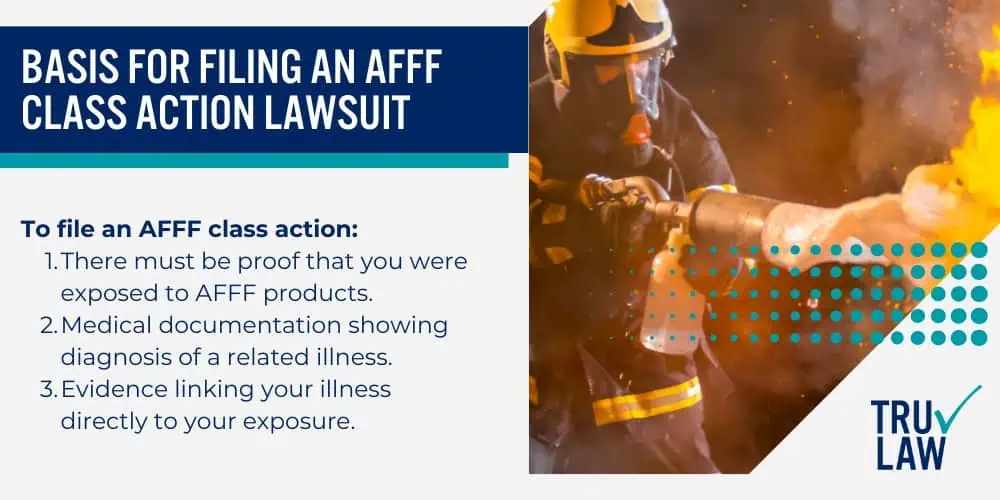
To file an AFFF class action:
- There must be proof that you were exposed to AFFF products.
- Medical documentation showing diagnosis of a related illness.
- Evidence linking your illness directly to your exposure.
While each case is unique and dependent on individual circumstances, these lawsuits generally revolve around negligence on part of manufacturers who prioritized profits over public safety.
The Science Behind Aqueous Film Forming Foam
Chemical Composition of AFFF
Aqueous film forming foam, often abbreviated as AFFF, is a mixture of different chemicals designed to suppress fires.
The primary components include water, fluorosurfactants, and hydrocarbon surfactants.
Fluorosurfactants are fluorochemical products that lower the surface tension of water, allowing it to spread more easily over the surface of a fire.
Hydrocarbon surfactants work in tandem with fluorosurfactants to create a foam blanket that smothers the fire.
One common type of fluorosurfactant used in AFFF foam is perfluorooctanoic acid (PFOA), a toxic chemical known for its persistence in the environment.
Functionality of AFFF in Firefighting
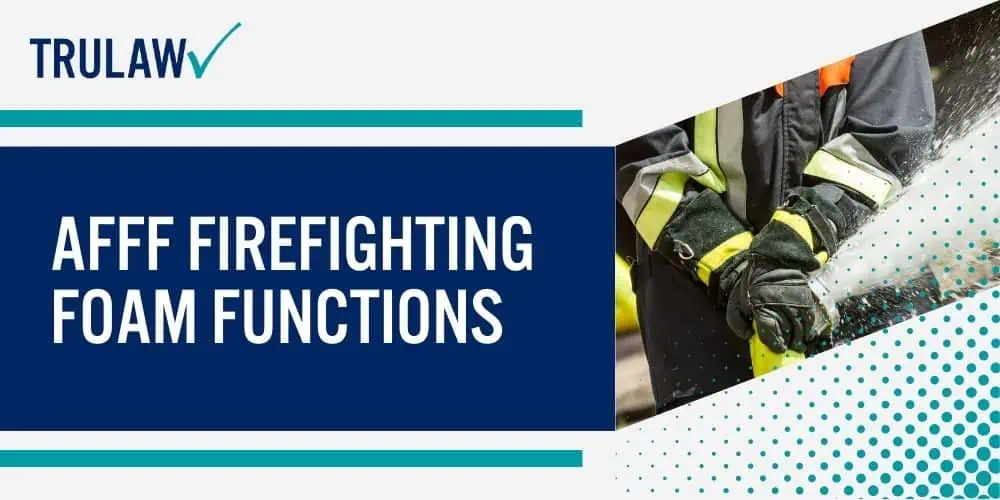
In firefighting scenarios, aqueous film forming foam works by creating a thin layer or “film” over flammable liquids.
This film prevents oxygen from reaching the fuel source and cools the fire by evaporating water within the foam.
Simultaneously, this forms a barrier that inhibits flammable vapors from escaping and reigniting.
The foams’ unique ability to rapidly cover large areas makes them particularly effective against fuel fires such as oil or gasoline spills.
However, their effectiveness comes at an environmental cost.
Environmental Implications
Scientific evidence has shown potential environmental implications due to the use of aqueous film forming foams.
These foams can contaminate local water sources when not properly managed after use.
One significant concern is groundwater contamination.
Polyfluoroalkyl substances (PFAS chemicals), including PFOA found in many foams, are highly persistent in both soil and groundwater systems.
Once introduced into these systems, they’re challenging to remove due to their resistance to natural degradation processes.
Moreover, PFAS have been identified in various water systems worldwide, indicating that AFFF foam manufacturers use is not just a localized issue but a global concern.
How AFFF Class Action Lawsuits Impacts Firefighters
Direct Exposure Risks
Firefighters are often exposed to various hazardous substances in their line of duty, but one substance that poses a significant risk is Aqueous Film Forming Foam (AFFF).
Many firefighters use this foam to extinguish fires, especially those involving highly flammable liquids.
However, the chemicals present in AFFF can pose serious health risks.
Direct contact with AFFF can cause skin irritation and eye damage.
It’s not just the immediate physical effects; there’s also the potential for harmful substances to be absorbed through the skin or inhaled during firefighting operations.
The exposure risk doesn’t end once the fire is out either.
These chemicals can linger on firefighting equipment and personal protective gear, increasing the chance of ongoing exposure.
Long-term Health Concerns
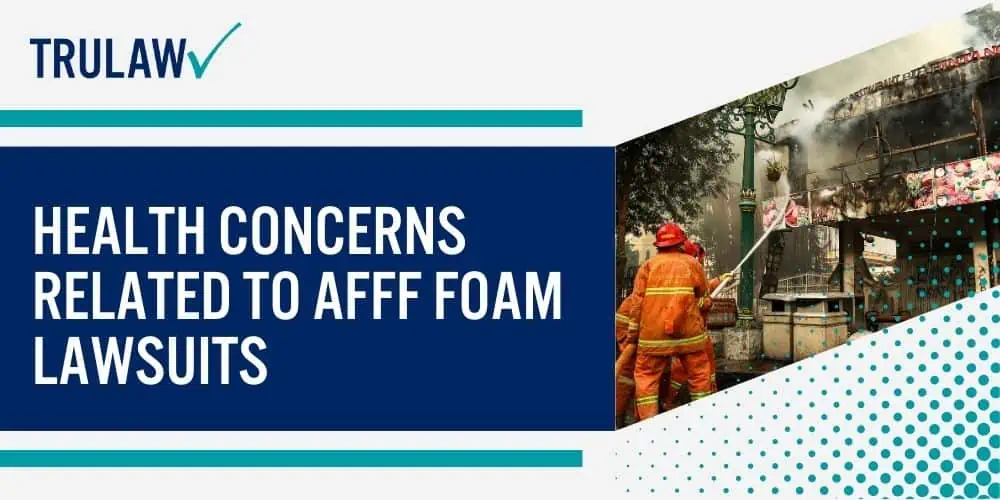
The health concerns related to AFFF foam lawsuits aren’t limited to immediate physical reactions.
Regular usage by firefighters has been linked with long-term health issues too.
Studies have shown an increased risk of several types of cancer among firefighters who frequently use AFFF.
These include kidney cancer, testicular cancer, and bladder cancer.
Former firefighters have reported other health problems such as liver disease and thyroid disorders which they believe are linked to their exposure to these foams.
While more research needs to be done into these links, it’s clear that regular usage of AFFF carries potential long-term health risks for firefighters.
Safety Measures and Precautions
Given these risks associated with AFFF, it’s essential that safety measures and precautions are strictly followed when handling this substance.
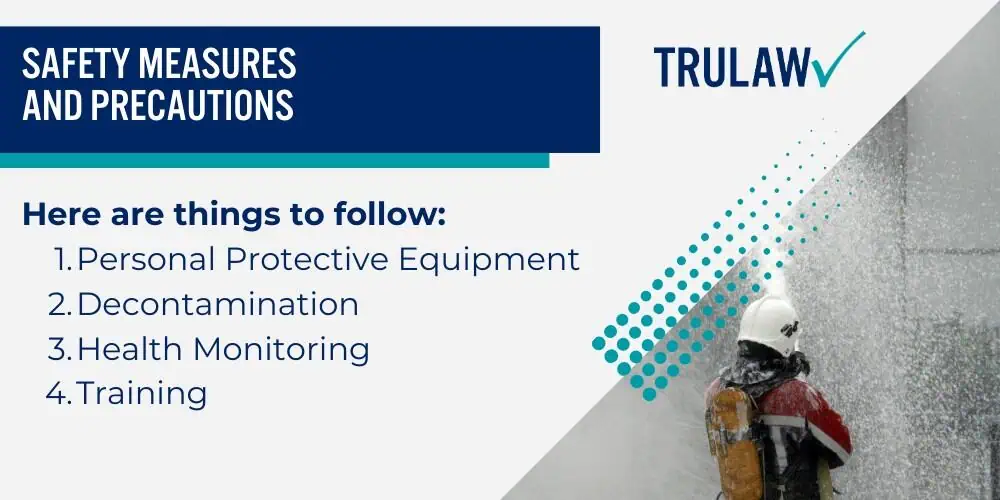
Here are things to follow:
- Personal Protective Equipment: Firefighters should always wear appropriate PPE when using AFFF.
- Decontamination: After a fire event where AFFF was used, all equipment should be thoroughly decontaminated.
- Health Monitoring: Regular medical check-ups should be conducted for emergency responders who regularly handle this foam.
- Training: Firefighters should be trained on the potential risks associated with AFFF and how to minimize their exposure.
The impact of AFFF on firefighters is a serious concern.
Direct exposure can lead to immediate health risks, while regular usage has been linked with long-term health problems including cancer.
Health Risks Associated With AFFF Exposure
Research findings show a correlation between chronic exposure to Aqueous Film Forming Foam (AFFF) and numerous health problems.
Specific Health Conditions Tied to Prolonged Exposure
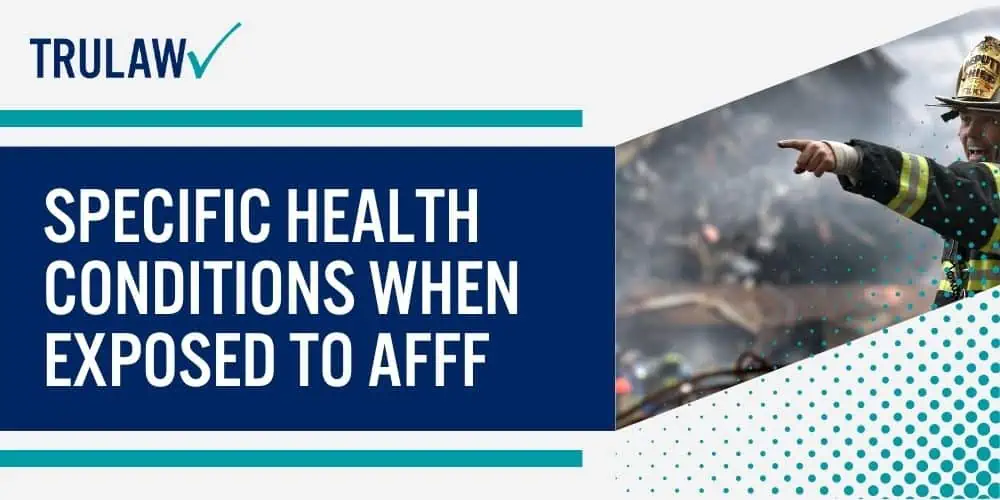
Prolonged occupational exposure to AFFF firefighting foam has been linked with several specific health conditions.
Here are the things included but not limited to:
- Kidney cancer: Studies have found that individuals exposed to PFAS, a key component of AFFF, are at an increased risk of developing kidney cancer.
- Testicular cancer: Men who have had long-term exposure to this foam may be more likely to receive a testicular cancer diagnosis.
- Hypertension: There is growing evidence suggesting that PFAS exposure can lead to hypertension in adults.
Studies Linking Foam To Various Cancers And Diseases
Toxicity studies on the impact of environmental contamination caused by AFFF have identified potential health risks associated with its use.
For instance, research has shown that firefighters using this foam are more likely than the general population to develop prostate cancer.
This suggests a strong link between the chemicals in the foam and this type of cancer.
Other studies indicate an association between PFAS exposure from AFFF and diseases such as thyroid disease and ulcerative colitis.
Impact On Non-Firefighting Populations Living Near Sites Where It’s Used Frequently
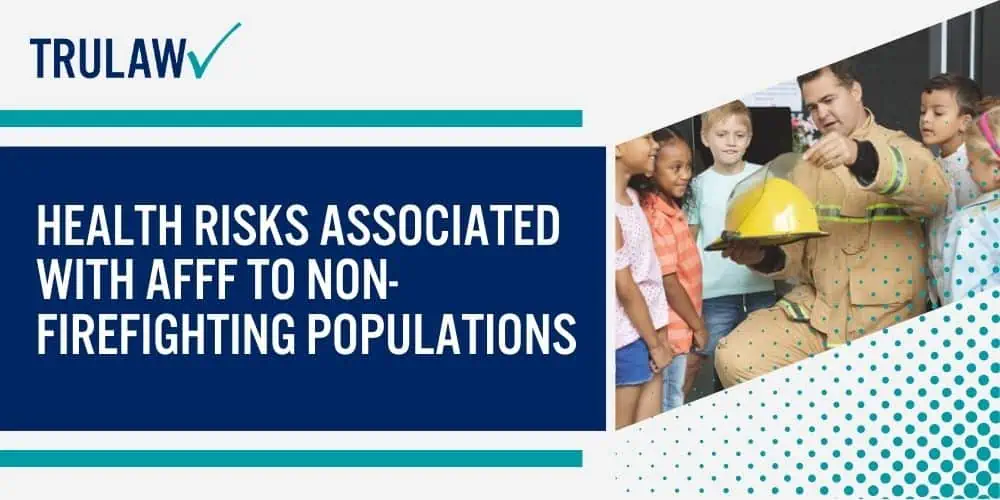
The health risks associated with AFFF aren’t limited only to those directly handling the foam.
Environmental contamination due to frequent use or improper disposal of AFFF can lead to water and soil contamination in nearby communities.
Residents living near these sites may experience chronic exposure through contaminated drinking water or food sources.
Several cases have been reported where non-firefighting populations developed cancer or other serious health complications after being exposed indirectly through contaminated environments.
These cases form part of numerous ongoing AFFF class action lawsuits against manufacturers for failing adequately inform users about these risks.
Potential Compensation In AFFF Class Action Lawsuits
In AFFF class action lawsuits, various types of damages can be claimed.
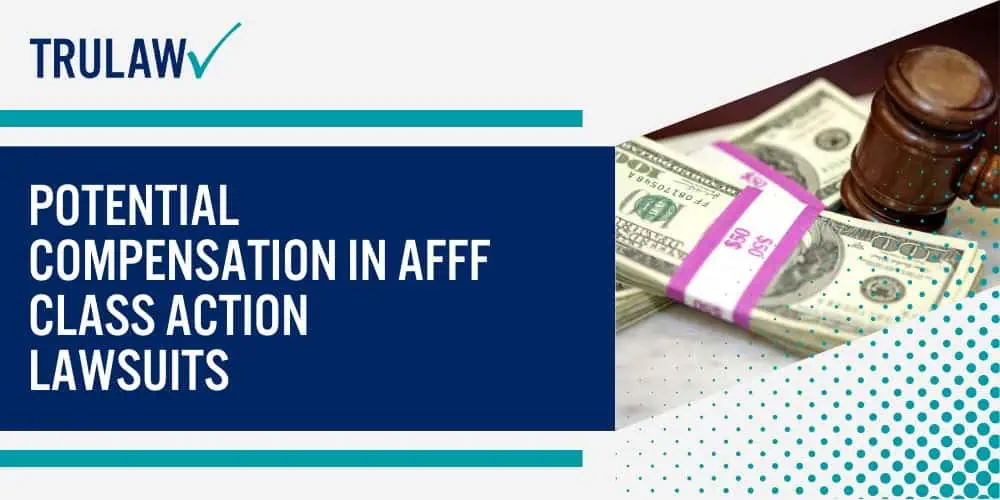
The claimants often seek financial compensation for both economic and non-economic losses
Economic Damages: These are quantifiable monetary losses resulting from exposure to AFFF.
They include medical expenses, loss of income, and future earnings.
Non-Economic Damages: These are intangible losses that do not have a direct monetary value.
They include pain and suffering, emotional distress, and loss of enjoyment of life.
Average Compensation Amounts
The settlement compensation awarded in past cases varies widely due to the unique circumstances surrounding each case.
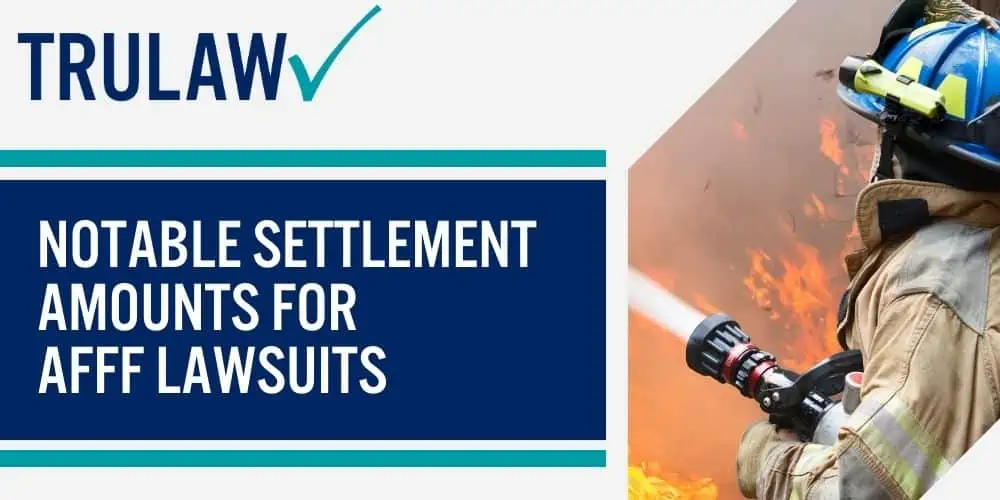
Here are some things worth noting some notable settlement amounts:
- In one case, a settlement fund amounting to $671 million was established for about 3,550 plaintiffs.
- Another significant case resulted in a $850 million settlement deal.
These figures provide an idea of the potential financial compensation that may be available in these lawsuits.
Factors Influencing Compensation
Here are the several factors influence the amount of compensation received in AFFF lawsuits:
- Extent of Injury: Severe injuries or illnesses related to AFFF exposure may lead to higher compensation.
- Proof of Negligence: Evidence showing the defendant’s negligence can significantly boost the plaintiff’s chances for a larger payout.
- Economic Losses: Tangible financial losses like medical bills and lost wages are crucial determinants.
- Quality of Legal Representation: Hiring experienced lawyers who specialize in such cases often results in higher settlements.
Navigating Legal Procedures In AFFF Class Action Lawsuits
Here are the steps to File a Lawsuit:
- Identify the harm: The first step in any personal injury case, including AFFF class action lawsuits, is identifying the harm caused by Aqueous Film Forming Foams (AFFFs).
- Find an attorney: Having experienced attorneys on your side is crucial in navigating the complex legal procedures associated with these cases.
- Prepare documents: Your lawyers will help you gather all necessary documents for new filings at the US district court or federal court.
- File the lawsuit: The lawsuit is filed at the district court where your attorney will present your case.
Role of Experienced Legal Representation
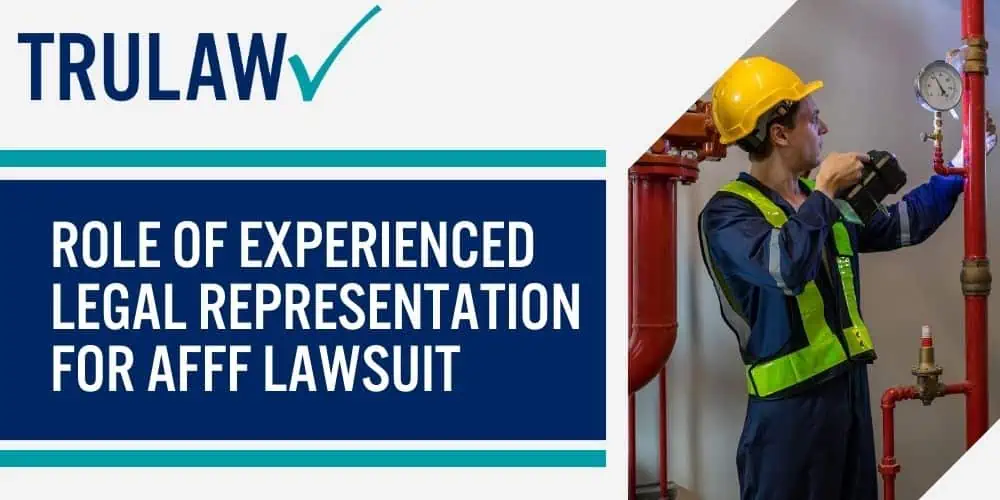
Experienced legal representation plays an indispensable role in these lawsuits.
Here are some of the important roles they portray:
- They understand the intricacies of litigation involving AFFFs
- They can provide expert advice and guidance throughout the process
- They are capable of negotiating settlements or arguing cases before mediators and courts
For instance, if you’re a navy veteran who has suffered due to exposure to AFFFs, specialized attorneys can help you navigate through this complicated process.
Expected Timeline
The timeline from filing to resolution varies greatly depending on various factors:
- Complexity of issues involved
- Number of plaintiffs
- Court’s schedule
However, it’s important to note that these lawsuits can take several months or even years to reach a resolution.
Hence, patience and persistence are key.
Future Implications Of AFFF Lawsuits
The potential impact of AFFF class action lawsuits on manufacturers and users is substantial.
Manufacturers may face significant financial penalties if found liable for harm caused by their products.
These lawsuits could lead to bankruptcy for some companies, forcing them out of business.
Impact on Manufacturers
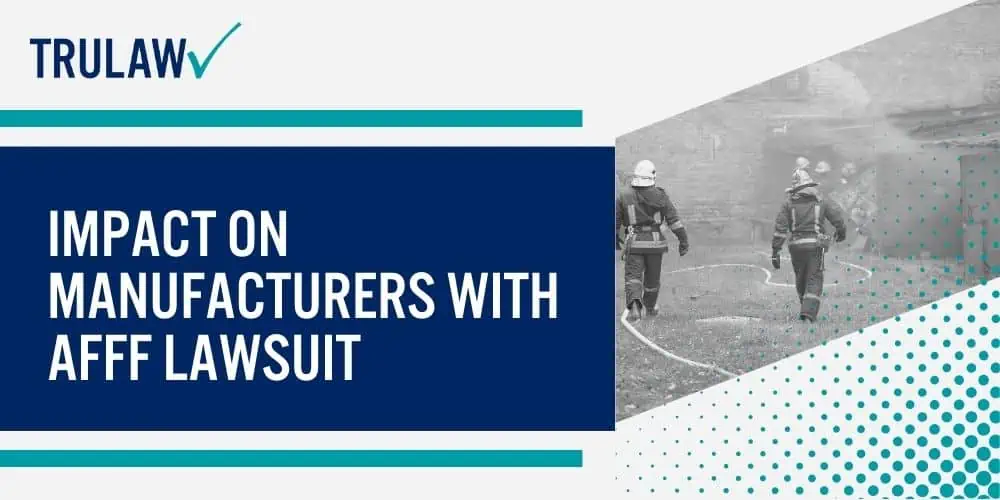
Here are the things that manufacturers are likely to experience several changes as a result of these lawsuits:
- Increased scrutiny from regulatory bodies, leading to more stringent safety standards
- Higher operating costs due to the need for additional testing and compliance measures
- Potential loss of market share as consumers become wary of products associated with health risks
These consequences could drive innovation within the industry, as manufacturers seek safer alternatives to AFFF.
The potential exists for a shift towards more environmentally friendly fire-fighting foams.
Changes in User Practices
Users, such as fire departments and industrial facilities, may also see changes in their practices.
They might have to replace existing stocks of AFFF with safer alternatives, potentially at great expense.
Training protocols may need revision to ensure safe handling and disposal of firefighting foams.
Regulatory Reforms
Regulatory reforms are another potential outcome of these lawsuits. Currently, there are few regulations governing the use and disposal of AFFF.
This could change as awareness grows about the health risks associated with these products.
Here are the possible regulatory changes that may include:
- Stricter guidelines for the storage and disposal of AFFF
- Mandatory training programs on safe handling procedures
- Bans or restrictions on the use of certain types of firefighting foam
Safety Regulations
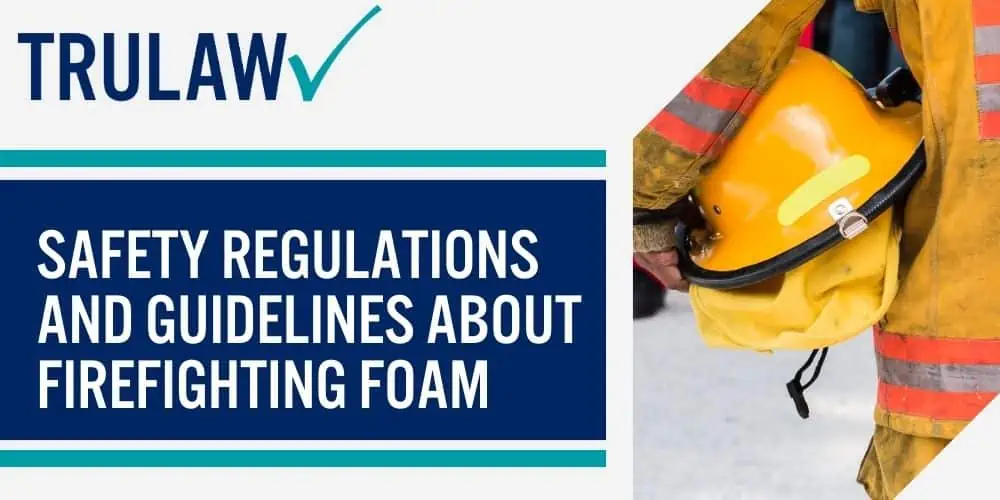
The influence on future safety regulations and guidelines is also noteworthy.
For instance, standards organizations like NFPA (National Fire Protection Association) might revise their guidelines based on new research into the hazards posed by firefighting foams.
Essential Facts about AFFF Firefighting Foam Lawsuits
Key Takeaways from Previous Lawsuits
Understanding the past can provide insights into the future, especially.
There have been several key takeaways from previous lawsuits that may provide valuable information for prospective plaintiffs.
Here are the notable and valuable information to consider:
- Notable Cases: In one of the most significant firefighting foam cancer lawsuits, 3M Company and other firefighting foam manufacturers agreed to pay $850 million to settle a lawsuit filed by Minnesota state over water contamination caused by toxic firefighting foams.
- Legal Grounds: The primary legal grounds in these cases often revolve around negligence or product liability claims.
Understanding Legal Grounds
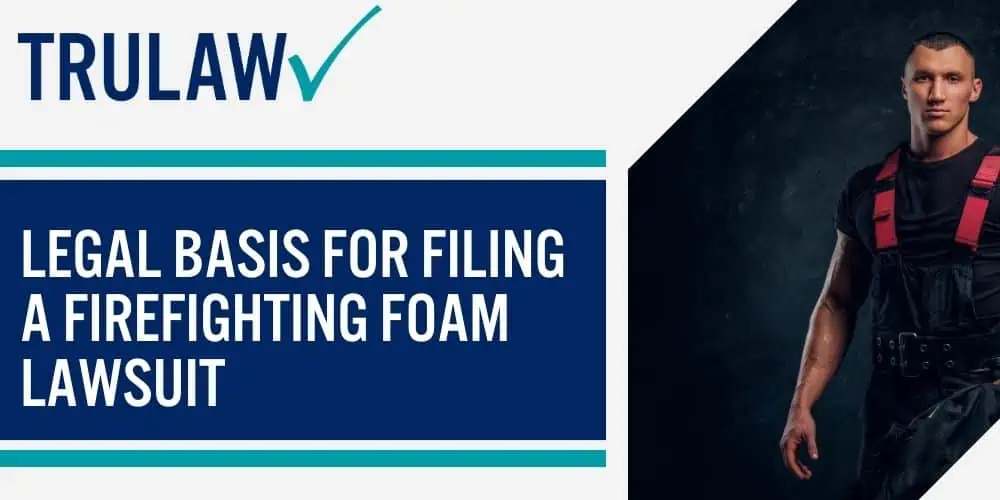
The legal basis for filing a foam lawsuit is typically grounded on two main points:
- Negligence: This implies that the firefighting foam manufacturers were aware of potential dangers linked to their products but did not act responsibly in informing users.
- Product Liability: Here, plaintiffs argue that the design or manufacturing process of the firefighting foams was flawed, leading to harmful exposure.
It’s crucial for those affected and their foam lawyers to understand these legal grounds before pursuing a firefighting foam class action lawsuit.
Importance of Medical Documentation
Medical documentation plays an essential role in proving cases related to AFFF class action lawsuits.
This documentation serves as tangible evidence linking health problems directly to exposure from toxic firefighting foams.
Proof of Exposure: Medical records indicating high levels of PFAS (perfluoroalkyl and polyfluoroalkyl substances), which are found in many firefighting foam products, can help establish proof of exposure.
Linkage to Health Problems: Studies have shown that PFAS can lead to various health issues including kidney and testicular cancer.
Medical records indicating diagnosis of such health conditions can strengthen a case significantly.
Wrapping Up: The Conclusion On AFFF Class Action Lawsuits
The complexity and severity surrounding AFFF class action lawsuits cannot be overstated.
With the potential health risks and the legal intricacies involved, it is evident that these lawsuits have far-reaching implications for both firefighters and the broader public.
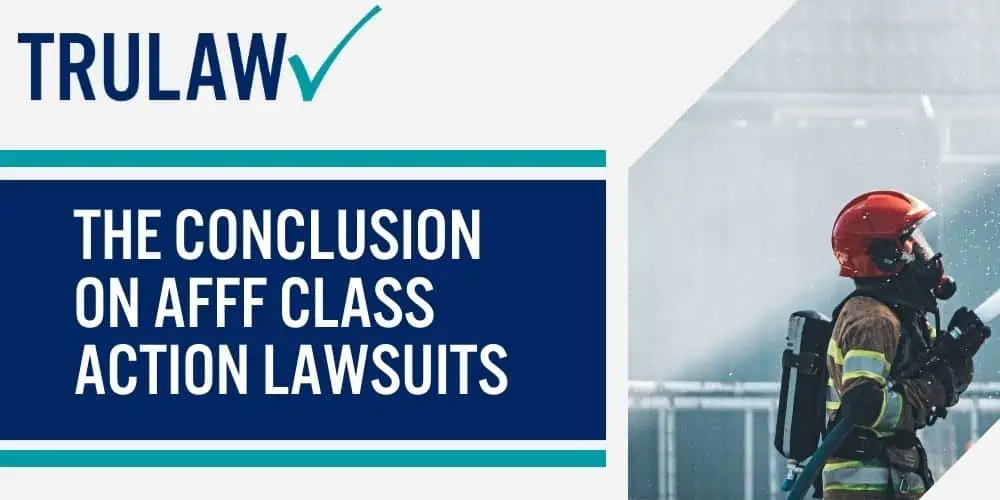
However, it’s essential to remember that potential compensation exists for those affected, providing a semblance of justice in this challenging scenario.
As we look towards the future, continued research into AFFF’s impact and ongoing legal battles will undoubtedly shape how we approach firefighting foams.
It is crucial to stay informed about these developments – not only for those directly impacted but also for anyone interested in public health issues or environmental law.
If you believe you’ve been affected by AFFF exposure, consider seeking professional advice to understand your options better.
AFFF Lawsuit Frequently Asked Questions
-
An AFFF class action lawsuit refers to a legal claim made by a group of individuals who have suffered similar harm from exposure to aqueous film-forming foam (AFFF), a common substance used in firefighting.
-
Exposure to AFFF has been linked with several health risks including kidney cancer, testicular cancer, thyroid disease among others due to its toxic components like PFAS compounds.
-
If you believe you’ve been exposed to AFFF and suffered adverse health effects as a result, it would be wise to consult with an attorney who specializes in such cases.
They can guide you through the process of joining an existing lawsuit or starting a new one.
-
Compensation varies depending on individual circumstances including extent of exposure, severity of health issues developed as a result and other factors considered by courts.
Compensation may cover medical expenses, lost wages and other damages.
-
The outcomes of these lawsuits could potentially lead to stricter regulations on the use of AFFF, increased research into safer alternatives and greater public awareness about the associated health risks.

Managing Attorney & Owner
With over 25 years of legal experience, Jessica Paluch-Hoerman is an Illinois lawyer, a CPA, and a mother of three. She spent the first decade of her career working as an international tax attorney at Deloitte.
In 2009, Jessie co-founded her own law firm with her husband – which has scaled to over 30 employees since its conception.
In 2016, Jessie founded TruLaw, which allows her to collaborate with attorneys and legal experts across the United States on a daily basis. This hypervaluable network of experts is what enables her to share the most reliable, accurate, and up-to-date legal information with our readers!
Additional AFFF Lawsuit resources on our website:
Here, at TruLaw, we’re committed to helping victims get the justice they deserve.
Alongside our partner law firms, we have successfully collected over $3 Billion in verdicts and settlements on behalf of injured individuals.
Would you like our help?
At TruLaw, we fiercely combat corporations that endanger individuals’ well-being. If you’ve suffered injuries and believe these well-funded entities should be held accountable, we’re here for you.
With TruLaw, you gain access to successful and seasoned lawyers who maximize your chances of success. Our lawyers invest in you—they do not receive a dime until your lawsuit reaches a successful resolution!
AFFF Lawsuit claims are being filed against manufacturers of aqueous film-forming foam (AFFF), commonly used in firefighting.
Claims allege that companies such as 3M, DuPont, and Tyco Fire Products failed to adequately warn users about the potential dangers of AFFF exposure — including increased risks of various cancers and diseases.
Depo Provera Lawsuit claims are being filed by individuals who allege they developed meningioma (a type of brain tumor) after receiving Depo-Provera birth control injections.
A 2024 study found that women using Depo-Provera for at least 1 year are five times more likely to develop meningioma brain tumors compared to those not using the drug.
Suboxone Tooth Decay Lawsuit claims are being filed against Indivior, the manufacturer of Suboxone, a medication used to treat opioid addiction.
Claims allege that Indivior failed to adequately warn users about the potential dangers of severe tooth decay and dental injuries associated with Suboxone’s sublingual film version.
Social Media Harm Lawsuits are being filed against social media companies for allegedly causing mental health issues in children and teens.
Claims allege that companies like Meta, Google, ByteDance, and Snap designed addictive platforms that led to anxiety, depression, and other mental health issues without adequately warning users or parents.
Transvaginal Mesh Lawsuits are being filed against manufacturers of transvaginal mesh products used to treat pelvic organ prolapse (POP) and stress urinary incontinence (SUI).
Claims allege that companies like Ethicon, C.R. Bard, and Boston Scientific failed to adequately warn about potential dangers — including erosion, pain, and infection.
Bair Hugger Warming Blanket Lawsuits involve claims against 3M — alleging their surgical warming blankets caused severe infections and complications (particularly in hip and knee replacement surgeries).
Plaintiffs claim 3M failed to warn about potential risks — despite knowing about increased risk of deep joint infections since 2011.
Baby Formula NEC Lawsuit claims are being filed against manufacturers of cow’s milk-based baby formula products.
Claims allege that companies like Abbott Laboratories (Similac) and Mead Johnson & Company (Enfamil) failed to warn about the increased risk of necrotizing enterocolitis (NEC) in premature infants.
Here, at TruLaw, we’re committed to helping victims get the justice they deserve.
Alongside our partner law firms, we have successfully collected over $3 Billion in verdicts and settlements on behalf of injured individuals.
Would you like our help?
